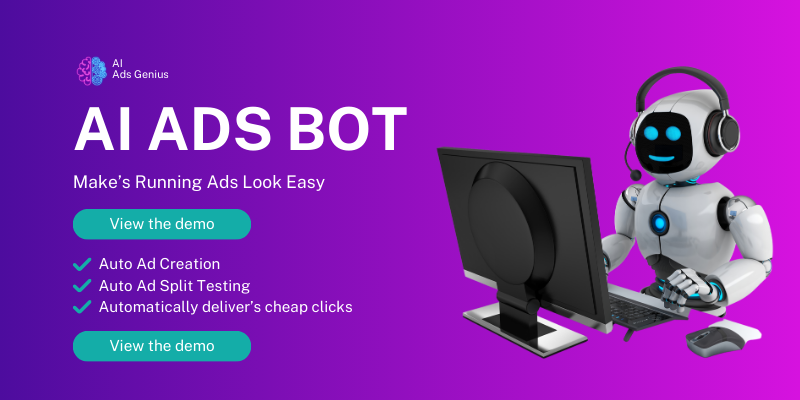1. Understanding Your Target Audience
Identifying Your Audience
When I first started using LinkedIn for ads, I realized that knowing my audience was crucial. I began by creating buyer personas based on the industries I wanted to target. This helped me visualize who my ideal customer would be, their job titles, and what challenges they faced. Understanding these aspects is like having a map that guides your campaign.
Don’t forget to explore LinkedIn’s robust targeting options. You can target by company size, job function, seniority, and more. Once I discovered these options, my campaigns became much more effective. Tailoring my ads to specific demographics made them resonate more with my audience.
Finally, gather insights from previous campaigns or industry research. I often check my competitors’ ads to see who they’re targeting and adjust mine accordingly. Analyzing their strategies allowed me to refine my own approach and get better results.
2. Setting Clear Goals and Objectives
Defining Success
Before launching an ad campaign, I can’t stress enough how important it is to set clear goals. What do you want to achieve? Are you looking for brand awareness, lead generation, or maybe just some traffic? The clearer my goals, the easier it is to measure the success of my campaigns.
For each campaign, I like to use the SMART criteria—Specific, Measurable, Achievable, Relevant, and Time-bound. This helps to ensure that my goals are realistic and structured. If you don’t have a clear direction, it’s easy to get lost in the metrics and lose sight of what really matters.
Lastly, I recommend writing down your objectives. Keeping them visible serves as a constant reminder and keeps me accountable throughout the campaign. I often refer back to this list while analyzing mid-campaign performance, as it helps adjust my strategy if necessary.
3. Crafting Compelling Ad Content
Engaging Copy
After understanding my audience and setting my goals, the next step is crafting the perfect ad copy. I’ve learned that my headlines are super important—they need to grab attention quickly. I often experiment with different headlines and see which ones resonate the most with my audience.
More importantly, I focus on the benefits over the features. People want to know how my product can solve their problems. By putting myself in the prospective buyer’s shoes, I write copy that speaks directly to what they need. This shift in perspective has dramatically improved my engagement rates.
Lastly, don’t forget the power of visuals. A compelling image or video can often boost my ad’s performance. I like to use eye-catching visuals that complement my message. Together, a strong visual and engaging copy create a winning combination!
4. Selecting the Right Ad Format
Understanding Ad Types
LinkedIn offers several ad formats, and I’ve learned that choosing the right one can make or break my campaign. For example, I often utilize Sponsored Content for brand awareness, as it blends seamlessly into the user’s feed. But when I need to push for conversions, Direct Sponsored Content is my go-to—it allows me to customize my message without clogging up my company’s page.
Carousels are great for showcasing multiple products, while video ads help in telling a story effectively. I found that experimenting with different ad formats has taught me what my audience responds to best. Make it a point to review performance metrics after each campaign to see which formats yield the highest engagement.
Additionally, I pay attention to A/B testing. Testing different formats can give valuable insights into what works. If one format isn’t performing as well as expected, I adjust and refine until I find the best fit for my objectives.
5. Monitoring and Optimizing Ads
Regular Performance Checks
One of the biggest lessons I’ve learned is that monitoring my ads is just as important as setting them up. I regularly log into LinkedIn and check the performance metrics, including click-through rates (CTR) and conversion rates. Keeping track of these helps me make informed decisions on how to optimize my campaigns.
If I notice an ad performing poorly, I dig deeper. I evaluate the targeting, the copy, and the visuals to identify what might be going wrong. More often than not, small tweaks can lead to major improvements. For instance, adjusting the copy based on feedback can lead to better engagement.
Moreover, I also keep a close eye on the budget. I’ve had campaigns where I ramped up the budget significantly after realizing it was yielding great results. Budgeting properly while optimizing is key; don’t be afraid to be flexible as you go along!
FAQs
1. How can I identify my target audience on LinkedIn?
Identifying your target audience involves creating buyer personas and utilizing LinkedIn’s targeting options. Analyze demographics, job titles, and industries to refine your audience accurately.
2. What does SMART stand for in setting goals?
SMART stands for Specific, Measurable, Achievable, Relevant, and Time-bound—criteria that can help you clarify your advertising objectives effectively.
3. What types of ad formats does LinkedIn offer?
LinkedIn offers several ad formats like Sponsored Content, Direct Sponsored Content, InMail, and video ads, which serve different marketing purposes. Understanding each format can boost your campaign’s performance.
4. How important are visuals in LinkedIn ads?
Very important! Compelling visuals can greatly enhance your ads’ engagement and effectiveness. Good visuals can help convey your message and capture attention quickly.
5. How often should I monitor my LinkedIn ad performance?
It’s crucial to monitor your ad performance regularly—daily or weekly—as it allows you to make timely adjustments, optimize your spend, and better meet your campaign goals.

